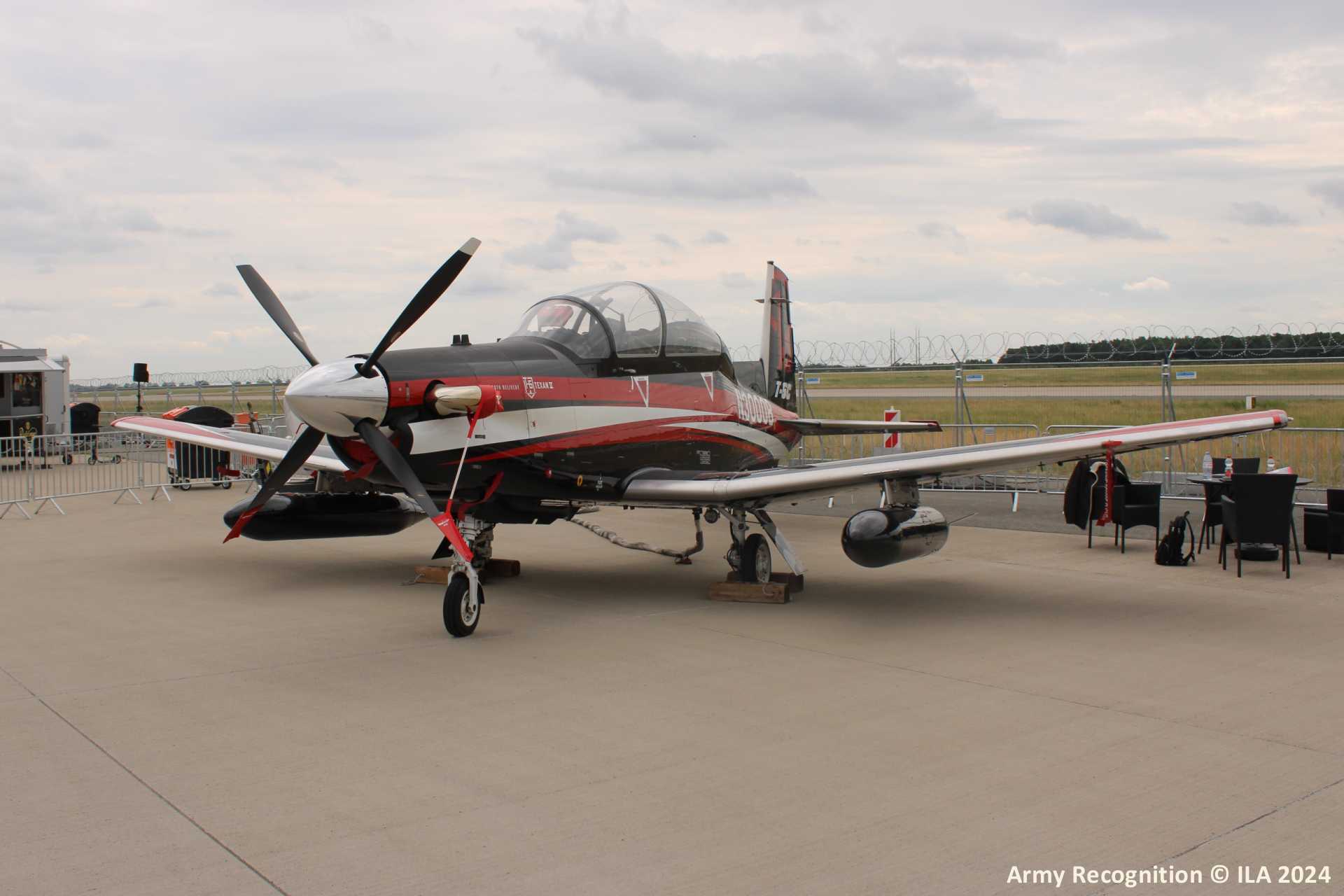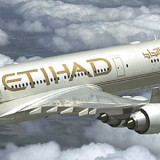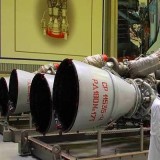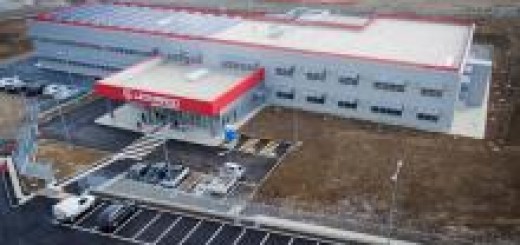Japan selects US-made T-6 Texan II as new trainer aircraft to replace locally-made Fuji T-7

{loadposition bannertop}
{loadposition sidebarpub}
Japan’s Ministry of Defense (MoD) announced on November 29, 2024, the selection of the Textron Aviation Defense Beechcraft T-6 Texan II turboprop aircraft, proposed by Kanematsu Corporation, as the next-generation primary trainer for the Japan Air Self-Defense Force (JASDF). This selection is part of the replacement program for the Fuji T-7 trainers, which have been in service since 2003 and are approaching the end of their operational lifecycle.Follow Army Recognition on Google News at this link
The Beechcraft T-6 Texan II, derived from the Swiss Pilatus PC-9, is used by 14 countries, NATO flight schools, and the U.S. Air Force and Navy. (Picture source: Army Recognition)
The selection process commenced on August 21, 2024, when the MoD issued requests for proposals. Evaluations were conducted in two stages. The first stage assessed compliance with performance, ground training systems, logistical support, and operational requirements. Out of four proposals, only the Beechcraft T-6 Texan II and the PC-7MKX, proposed by Subaru Corporation, advanced to the second stage. The Turkish Hurkus, proposed by Daihyaku Shoji, did not meet critical requirements, while Shintoa Trading’s proposal was disqualified due to the absence of a required aircraft component. In the second stage, a scoring system was used to evaluate performance, cost, and operational factors. The T-6 Texan II achieved the highest score and was selected.
The total program cost for the T-6, including six simulators and other ground training equipment, is estimated at JPY 133.65 billion ($882.09 million). Each aircraft is projected to cost JPY 1.21 billion ($7.99 million). The FY2025 budget includes an allocation of JPY 21.2 billion ($139.92 million) for two aircraft and related systems. Japan plans to procure 36 aircraft in total, all to be imported, with deliveries scheduled through FY2030 to align with the planned retirement of the Fuji T-7 fleet.
The selection of the T-6 Texan II did not include trial flights, relying instead on document-based evaluations. This methodology, while less common, reflects the MoD’s focus on cost-effectiveness and operational compliance. The decision builds on Japan’s historical use of earlier T-6 variants, including the T-6D/F/G and SNJ-5/6, operated by the JASDF and Maritime Self-Defense Force (JMSDF) from 1955. These earlier variants were replaced by jet-powered trainers in the 1960s, though some are preserved in museums, and one remains operational at Shizuhama Air Base.
The MoD’s selection of the T-6 Texan II is part of a broader modernization of Japan’s pilot training infrastructure. The program is designed to prepare pilots for advanced fighter aircraft while addressing operational requirements. It remains uncertain whether the T-6 could also replace other training platforms, such as the Maritime Self-Defense Force’s T-5 trainer or the Kawasaki T-4 advanced trainer. The T-6 Texan II, derived from the Swiss Pilatus PC-9, is used by 14 countries, NATO flight schools, and the U.S. Air Force and Navy. Japan’s acquisition of the T-6 aligns with international trends toward standardization in training systems. Deliveries are set to begin in 2027, marking the first step in Japan’s phased approach to upgrading its training fleet.
The Beechcraft T-6 Texan II is equipped with a Pratt & Whitney Canada PT6A-68 turboprop engine generating 1,100 horsepower. Its specifications include a maximum speed of 586 km/h, a climb rate of 1,372 meters per minute, a service ceiling of 9,500 meters, and a range of 1,574 kilometers. Compared to the T-7, which has a maximum speed of 376 km/h and a ceiling of 7,620 meters, the T-6 provides increased performance metrics. The aircraft incorporates a digital glass cockpit with multi-function displays, a head-up display, and navigation systems. Safety features include ejection seats capable of zero-zero operations and a pressurized cockpit. It also supports synthetic air-to-ground and air-to-air training capabilities.
The Fuji T-7, developed by Fuji Heavy Industries (now Subaru), has served as the JASDF’s primary trainer since 2003, replacing the T-3. Its design is derived from the Fuji T-3, which was influenced by the Beechcraft T-34C Turbo Mentor, highlighting the historical use of American aircraft designs in JASDF training. Officially adopted in 2003, the T-7 introduced the Rolls-Royce 250-B17F turboprop engine for improved operational reliability. It was selected over the Pilatus PC-7, despite procurement-related controversies. Key features include a low-wing monoplane design, tandem seating, and cockpit modifications, with cost efficiency achieved through component reuse from the T-3. Of the 49 units produced, all remain in use at JASDF training bases. Their retirement is scheduled to begin in 2030 as the T-6 Texan II is phased in. The T-7 has not been exported due to political considerations rather than technical constraints.
Officially adopted in 2003 to replace the earlier T-3, the Fuji T-7 introduced, for instance, the Rolls-Royce 250-B17F turboprop engine for improved operational reliability. (Picture source: Japanese MoD)

{loadposition bannertop}
{loadposition sidebarpub}
Japan’s Ministry of Defense (MoD) announced on November 29, 2024, the selection of the Textron Aviation Defense Beechcraft T-6 Texan II turboprop aircraft, proposed by Kanematsu Corporation, as the next-generation primary trainer for the Japan Air Self-Defense Force (JASDF). This selection is part of the replacement program for the Fuji T-7 trainers, which have been in service since 2003 and are approaching the end of their operational lifecycle.
Follow Army Recognition on Google News at this link
The Beechcraft T-6 Texan II, derived from the Swiss Pilatus PC-9, is used by 14 countries, NATO flight schools, and the U.S. Air Force and Navy. (Picture source: Army Recognition)
The selection process commenced on August 21, 2024, when the MoD issued requests for proposals. Evaluations were conducted in two stages. The first stage assessed compliance with performance, ground training systems, logistical support, and operational requirements. Out of four proposals, only the Beechcraft T-6 Texan II and the PC-7MKX, proposed by Subaru Corporation, advanced to the second stage. The Turkish Hurkus, proposed by Daihyaku Shoji, did not meet critical requirements, while Shintoa Trading’s proposal was disqualified due to the absence of a required aircraft component. In the second stage, a scoring system was used to evaluate performance, cost, and operational factors. The T-6 Texan II achieved the highest score and was selected.
The total program cost for the T-6, including six simulators and other ground training equipment, is estimated at JPY 133.65 billion ($882.09 million). Each aircraft is projected to cost JPY 1.21 billion ($7.99 million). The FY2025 budget includes an allocation of JPY 21.2 billion ($139.92 million) for two aircraft and related systems. Japan plans to procure 36 aircraft in total, all to be imported, with deliveries scheduled through FY2030 to align with the planned retirement of the Fuji T-7 fleet.
The selection of the T-6 Texan II did not include trial flights, relying instead on document-based evaluations. This methodology, while less common, reflects the MoD’s focus on cost-effectiveness and operational compliance. The decision builds on Japan’s historical use of earlier T-6 variants, including the T-6D/F/G and SNJ-5/6, operated by the JASDF and Maritime Self-Defense Force (JMSDF) from 1955. These earlier variants were replaced by jet-powered trainers in the 1960s, though some are preserved in museums, and one remains operational at Shizuhama Air Base.
The MoD’s selection of the T-6 Texan II is part of a broader modernization of Japan’s pilot training infrastructure. The program is designed to prepare pilots for advanced fighter aircraft while addressing operational requirements. It remains uncertain whether the T-6 could also replace other training platforms, such as the Maritime Self-Defense Force’s T-5 trainer or the Kawasaki T-4 advanced trainer. The T-6 Texan II, derived from the Swiss Pilatus PC-9, is used by 14 countries, NATO flight schools, and the U.S. Air Force and Navy. Japan’s acquisition of the T-6 aligns with international trends toward standardization in training systems. Deliveries are set to begin in 2027, marking the first step in Japan’s phased approach to upgrading its training fleet.
The Beechcraft T-6 Texan II is equipped with a Pratt & Whitney Canada PT6A-68 turboprop engine generating 1,100 horsepower. Its specifications include a maximum speed of 586 km/h, a climb rate of 1,372 meters per minute, a service ceiling of 9,500 meters, and a range of 1,574 kilometers. Compared to the T-7, which has a maximum speed of 376 km/h and a ceiling of 7,620 meters, the T-6 provides increased performance metrics. The aircraft incorporates a digital glass cockpit with multi-function displays, a head-up display, and navigation systems. Safety features include ejection seats capable of zero-zero operations and a pressurized cockpit. It also supports synthetic air-to-ground and air-to-air training capabilities.
The Fuji T-7, developed by Fuji Heavy Industries (now Subaru), has served as the JASDF’s primary trainer since 2003, replacing the T-3. Its design is derived from the Fuji T-3, which was influenced by the Beechcraft T-34C Turbo Mentor, highlighting the historical use of American aircraft designs in JASDF training. Officially adopted in 2003, the T-7 introduced the Rolls-Royce 250-B17F turboprop engine for improved operational reliability. It was selected over the Pilatus PC-7, despite procurement-related controversies. Key features include a low-wing monoplane design, tandem seating, and cockpit modifications, with cost efficiency achieved through component reuse from the T-3. Of the 49 units produced, all remain in use at JASDF training bases. Their retirement is scheduled to begin in 2030 as the T-6 Texan II is phased in. The T-7 has not been exported due to political considerations rather than technical constraints.

Officially adopted in 2003 to replace the earlier T-3, the Fuji T-7 introduced, for instance, the Rolls-Royce 250-B17F turboprop engine for improved operational reliability. (Picture source: Japanese MoD)





